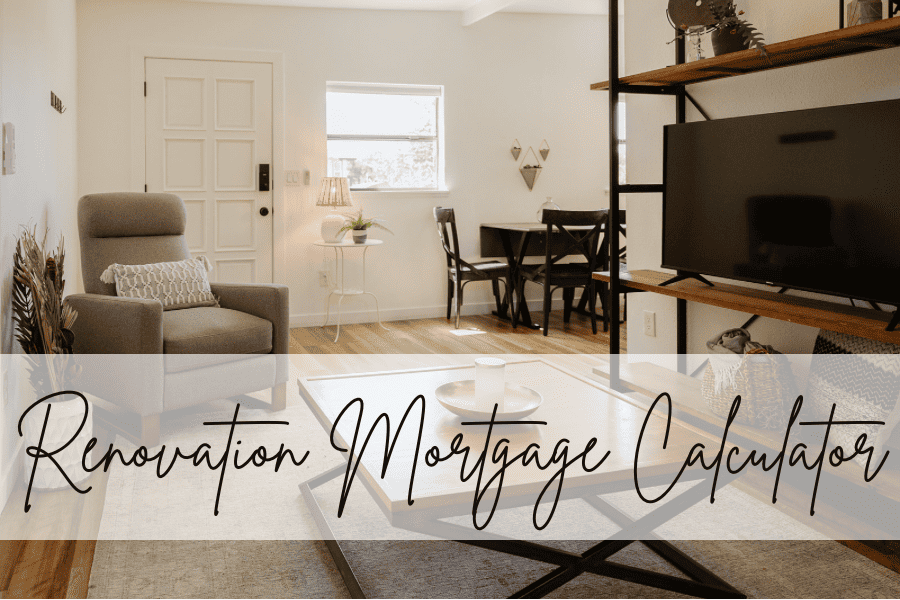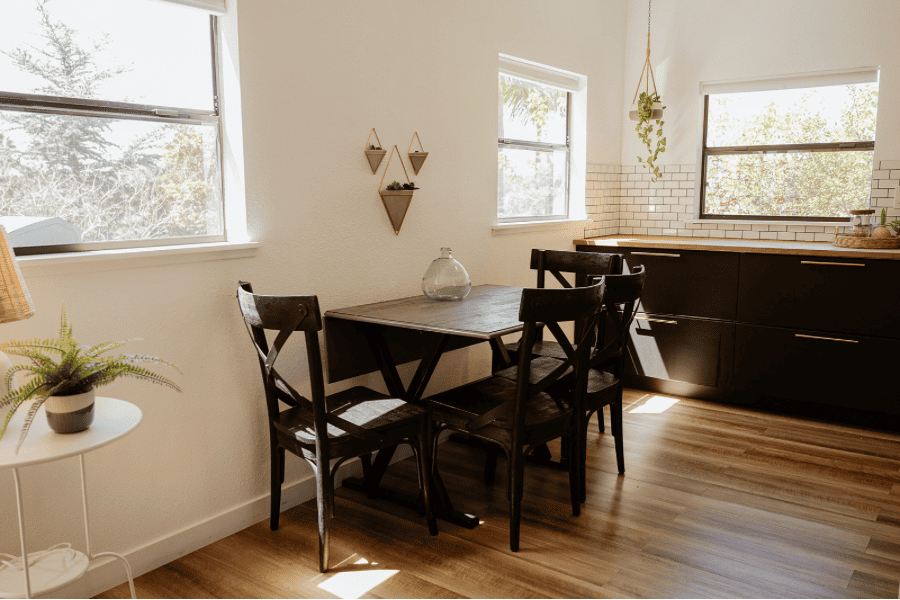This post may contain affiliate links, meaning if you decide to make a purchase via my links, I may earn a commission at no additional cost to you. See my disclosures for more info.
Home renovations are exciting but can quickly become overwhelming without proper planning and budgeting. One powerful tool that can help you in this process is a renovation mortgage calculator.
If you’re anything like me, you can get caught up in picking out all the finishes for a remodel project but where the majority of our time should be spent, is perfecting the budget and pushing the contractors to complete! Time is money and as we’ll explore in this post, especially when financing a renovation, it can add extra expenses.
This post is about the importance of a renovation mortgage calculator in a successful home remodel.
Benefits of a Renovation Mortgage Calculator
Understanding Renovation Mortgage Options
Can a mortgage include renovation costs?
Renovation mortgages, also known as home improvement loans or fixer-upper loans, differ from traditional mortgages in that they incorporate the cost of renovations into the loan amount. These loans offer the flexibility to fund both the purchase of a property and the subsequent renovations. There are three types of renovation mortgages, all of which cover most home improvements (major or minor).
- FHA 203(k) loan: Insured by the Federal Housing Administration
- HomeStyle loan: Guaranteed by Fannie Mae
- CHOICERenovation loan: Guaranteed by Freddie Mac
Financing a renovation on a house you already own?
These loan types are great if you’re buying a fixer upper don’t have the cash on hand to do the renovations at closing. But what do you do if you already own the home and need to do repairs but don’t have the cash (or want to use your cash) for the repairs. There are a number of options here and I’ve listed out the 5 most common approaches below:
- Home improvement loan or personal loan: Typically between $3k – $50k
- Home equity loan: Can be up to 85% of the appraised value of your home
- Home equity line of credit (HELOC): Can be up to 85% of the appraised value of your home
- Mortgage refinance: 85-90% of the value of your home depending on the lender
- Credit card: Between $1k – $25k depending on credit history
Decide the end goal for the property first
Before figuring out how you want to finance a home renovation, you need to be crystal clear on your end goals for the property. This will be the biggest indicator on how you need to finance that renovation. Here are a couple examples:
Primary Residence:
If this is your primary residence, and it’s a livable home, you may consider saving up cash and doing a handful of projects every year to complete the work. The goal of the primary residence is to pay it off and live there making it a liability instead of an asset. Now if you’re looking to add an income generating component, like and ADU or do a live-in flip, financing the renovations may make sense so you can get it done quicker and start earning that extra income quick.
Second Home:
If it’s a second home/vacation home these renovations should be done with cash as this too is a liability and not an asset. Now, if you’re going to rent it out as a short term rental to pay for the expenses, financing the renovation makes sense so you can generate the income quicker.
Investment Property:
This almost always makes sense to use a financing option for remodels. Any of the 5 options above would work great but you can refinance it after the renovations are complete (consult a lending expert) or use the revenue to pay off the financing costs.
Importance of Budgeting in Home Renovations
Once you know your end goal for the property, the next step is to nail down the budget for the whole project. Effective budgeting is the cornerstone of a successful renovation project. Without a clear understanding of your financial constraints and goals, you risk overspending and encountering unforeseen challenges. Here’s the best way I have found to build out a project budget.
Make a detailed list (scope of work)
Once you have a comprehensive list, go back and reorder that project list in order of importance to you to get completed. This way you can clearly communicate to contractors and vendors what is most important to you if the budget is not enough to complete everything you want to do.
Start interviewing contractors and vendors
We always act as the General Contractor and hire sub-contractors ourselves to save money. A great way to get contractor recommendations if from local realtors, friends and family that have done work on their homes and are happy with the job or a google search (be sure to check their reviews!). This is also a great way to find sub-contractors if you want to be your own general. Another favorite tool of mine for finding sub-contractors is Thumbtack or Angie’s List. You can easily communicate, read reviews and get multiple quotes quickly.
Compile your quotes
Go back to that detailed list you made in step 1 and match the quotes to the projects to build out the budget. Make sure to only plan for 80% of your total budget and allow 20% for unexpected expenses because unexpected issues WILL happen.
Financing Options
Now that you have your detailed budget built out, you can move onto selecting your financing options. Many lenders will require a general contractor’s scope of work to finance a renovation so having these items complete before applying for financing is crucial.
BONUS
If you’re planning on financing the renovations, I’d recommend planning for 70% of your budget for projects, 20% for unexpected expenses and 10% for any financing costs while completing the project. Financing costs will vary depending on your timeline for completion.
Calculating the Loan Costs
Now that you’ve identified the end goal for the project, made a detailed scope of work and have a contractor, next steps is figuring out financing! There are SO many different financial institutions that offer these financing options. I’d recommend talking to at least 3 different lenders/banks for each loan option. Once you get the quotes, a great tool to double check the details they give you is found at Calculator.net. Their financial calculators are what I use when budgeting for a financed project and I have found that they are the best out there! Below is a link to each calculator that corresponds with the loan type. Save and use these as you loan shop! It will help with questions to the potential lender:
Personal loan
Whether it’s amortized over a set number of years or has a deferred payment due at maturity, this is the best calculator to help with this financing option.
Home equity loan
These are usually fixed rate for a set number of years and amortized. This is the best calculator to help with this financing option.
Home equity line of credit
These are usually interest only loans for 7-10 years with the entire balance due at the end of the loan. This is the best calculator to help with this financing option.
Mortgage refinance
If you’re looking to pull cash out of your house and refinance your mortgage, this is the best calculator for determining your new payment with the increased loan balance.
Credit cards
There are many credit cards that offer 0% interest for a time period before the interest kicks in. This is the best calculator to help determine what the pay off period would look like if you couldn’t pay it off before the promotional period expired.
Mastering your renovation budget is critical in achieving a successful home remodel and the various renovation mortgage calculators serve as a valuable tool in this journey. By understanding the nuances of renovation mortgages and leveraging the capabilities of the calculators, homeowners can embark on their renovation projects with confidence and financial strength.
This post was all about the renovation mortgage calculator.
This post may contain affiliate links, meaning if you decide to make a purchase via my links, I may earn a commission at no additional cost to you. See my disclosures for more info.






